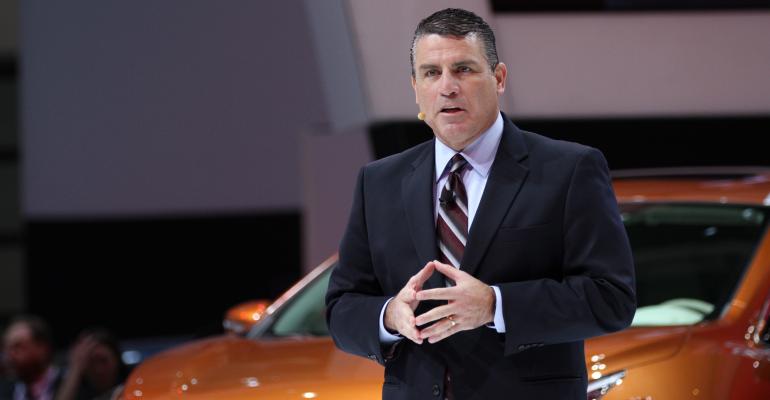NEW YORK – Nissan is trying to stay out of the way of its 1,100 U.S. dealers when it comes to retailing vehicles, an executive for the automaker says here.
“We’ve learned to work with them and get the hell out of the way to let them do their jobs,” says Fred Diaz, senior vice president-sales and marketing for Nissan’s U.S. unit. “They know what they’re doing.”
Nissan once rated last in an annual by-brand dealer satisfaction ranking by the National Automobile Dealers Assn.
“We didn’t like being there,” Diaz says. It’s now in the middle of the pack, which still isn’t good enough, he adds.
He largely credits the improvement to Nissan committing to meet frequently with its national dealer council at different locations around the country.
“We’re the only brand in U.S. to meet monthly with its dealer council,” Diaz says. “Everything that’s not working, we talk about at those meetings.”
Likewise, ever new Nissan retailing initiative makes the agenda of such meetings, he says at the J.D. Power/NADA Automotive Forum held in conjunction with the New York International Auto Show.
Among the reforms: Nissan has overhauled its stair-step incentive plan. Many dealers had found it egregious, citing inconsistencies in its structure and goal-setting.
“Dealers hated our stair-step program, so we fixed it,” Diaz says. “The replacement allows them to better plan their orders. We don’t spike their objectives from month to month. I’d be lying if I said it was perfect, but it’s better than it was.”
Nissan is working with dealers to launch its “Quality Growth Plan” that aims to improve the brand’s so-so customer-experience standing in a J.D. Power sales satisfaction index. The automaker currently ranks as “average.”
“The new program focuses on dealer loyalty and service retention,” Diaz says. “We want to create intense loyalty to dealers and our brand.”
The program also factors in “sustained profitability in this hyper-competitive marketplace,” Diaz says, declining to tell exactly how the automaker will reward dealers for meeting goals. “I can’t get into details, but dealers have an opportunity for additional bonuses.”
Nissan hopes to reach 10% of market share by 2017, Diaz says. It doesn’t have far to go, although automotive market-share increases typically don’t come easy, if at all. Nissan’s market share was 8.4% in 2014. This year it is 9.3% through February, according to WardsAuto data.
Diaz speaks at a conference session entitled “Building a Brand and Managing Sustained Success in a Hyperactive Competitive Marketplace.”
Also weighing in on that topic is Tom Doll, president and chief operating officer of Subaru of America, which has seen impressive sales gains in recent years.
“We’ve enjoyed hockey-stick growth, but there were issues with fixed operations,” he says, referring to some of its 620 dealerships’ back-end operations struggling to keep up with front-end vehicle deliveries.
Buyers ultimately return to the dealership to get their vehicles maintained and repaired, he notes. A backlogged service department is not a way to win their hearts and return business.
“We’re addressing the issue by increasing technician levels and service-bay capacity, Doll says. The cost for doing that falls on individual dealers but Subaru is subsidizing them for the facility improvements.





